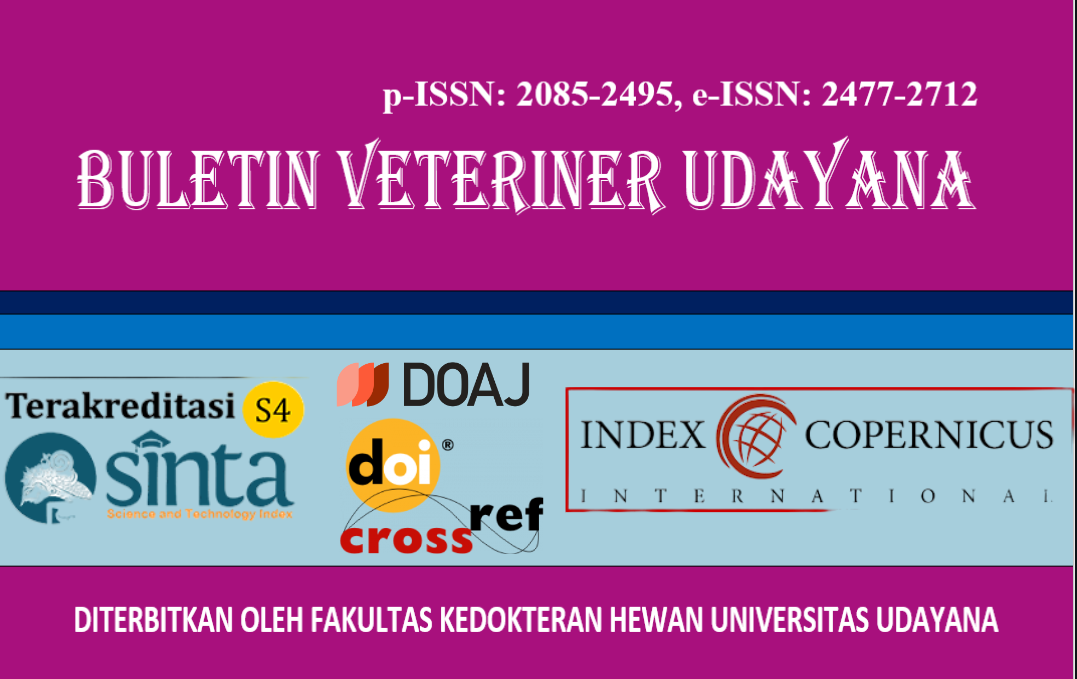HISTOLOGICAL STRUCTURE AND HISTOMORPHOMETRY OF THE BALI DUCK PROVENTRICULUS IN STARTER PHASE
DOI:
https://doi.org/10.24843/bulvet.2025.v17.i04.p17Keywords:
Bali duck, proventriculus, histomorphometry, starter phaseAbstract
The proventriculus is one of the primary digestive organs in poultry, functioning as a gland responsible for enzymatic digestion through the secretion of hydrochloric acid and pepsinogen. This study aimed to examine the histological structure and histomorphometry of the proventriculus in Bali ducks during the starter phase. Samples were collected from ducks aged 1, 14, 28, 42, and 56 days, totaling 30 individuals (15 males and 15 females). Histological observations were performed using a binocular microscope, while histomorphometric measurements were conducted using the ImageJ application. Histological data were presented descriptively, and histomorphometric data were analyzed using Analysis of Variance (ANOVA) followed by Duncan’s test. The histological structure of the proventriculus consists of the tunica mucosa, tunica submucosa, tunica muscularis, and tunica serosa. All four layers showed increased thickness with advancing age: the tunica mucosa increased from 156.31 µm to 352.31 µm, the tunica submucosa from 1,113.71 µm to 2,270.87 µm, the tunica muscularis from 215.62 µm to 573.62 µm, and the tunica serosa from 132.86 µm to 486.70 µm. No significant differences (p>0.05) were found in the histological structure between male and female ducks. However, significant differences (p<0.05) in histomorphometric measurements were observed among different age groups.




